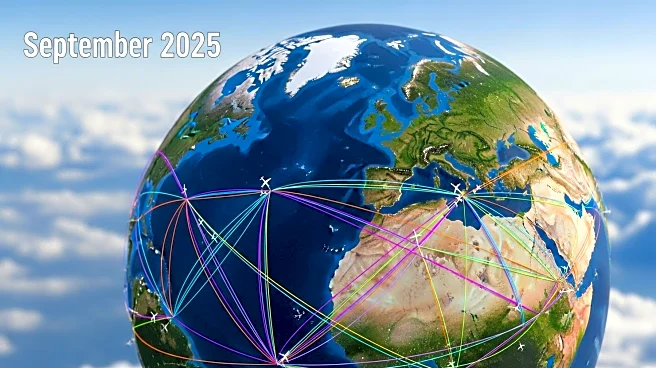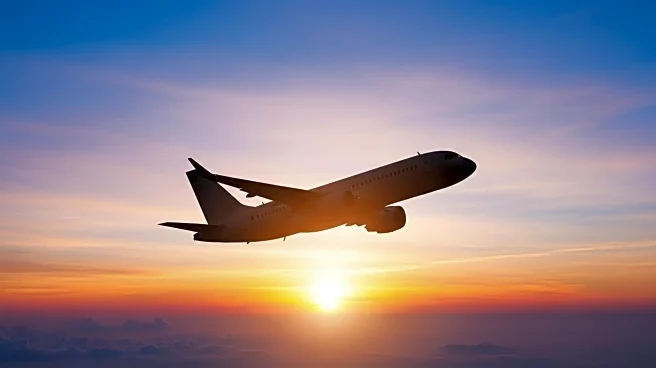What's Happening?
In September 2025, several airlines are expanding their global networks by launching new routes. Scandinavian Airlines (SAS) is introducing its first nonstop service between Scandinavia and Seoul, starting from Copenhagen on September 12. This route will operate four times weekly with Airbus A350-900s, reducing to three times weekly during the winter season. Alaska Airlines and Hawaiian Airlines are also extending their network to Seoul with a new route connecting Seattle-Tacoma International Airport and Seoul Incheon International Airport, launching on September 12. KLM is expanding its South Asian footprint with a new Amsterdam-Hyderabad route starting September 2, while Icelandair is opening a Reykjavik Keflavik-Istanbul route on September 5. Etihad Airways will inaugurate a daily Abu Dhabi-Taipei route from September 7, and China Eastern Airlines will debut nonstop Shanghai Pudong-Barcelona flights from September 26.
Why It's Important?
The expansion of these airline routes signifies a strategic move to enhance connectivity and capture market share in key international destinations. For SAS, the new Copenhagen-Seoul route strengthens its position in the Asian market, leveraging its partnership with Korean Air. Alaska and Hawaiian Airlines' new Seattle-Seoul route reflects the growing demand for transpacific travel and the strategic importance of Seattle as a gateway. KLM's entry into Hyderabad marks its continued investment in the Indian market, a region with significant growth potential. Icelandair's new route to Istanbul represents its longest 737 operation, indicating a shift in its strategic focus following the suspension of Tel Aviv flights. These expansions are likely to increase competition among airlines, offering more options for travelers and potentially leading to competitive pricing.
What's Next?
As these new routes commence, airlines will monitor passenger demand and adjust frequencies accordingly. The success of these routes could lead to further expansions and partnerships, particularly in high-demand regions like Asia and Europe. Airlines may also explore additional markets to diversify their networks and mitigate risks associated with geopolitical tensions or economic downturns. The increased connectivity could stimulate tourism and business travel, benefiting local economies and fostering international trade relations.













